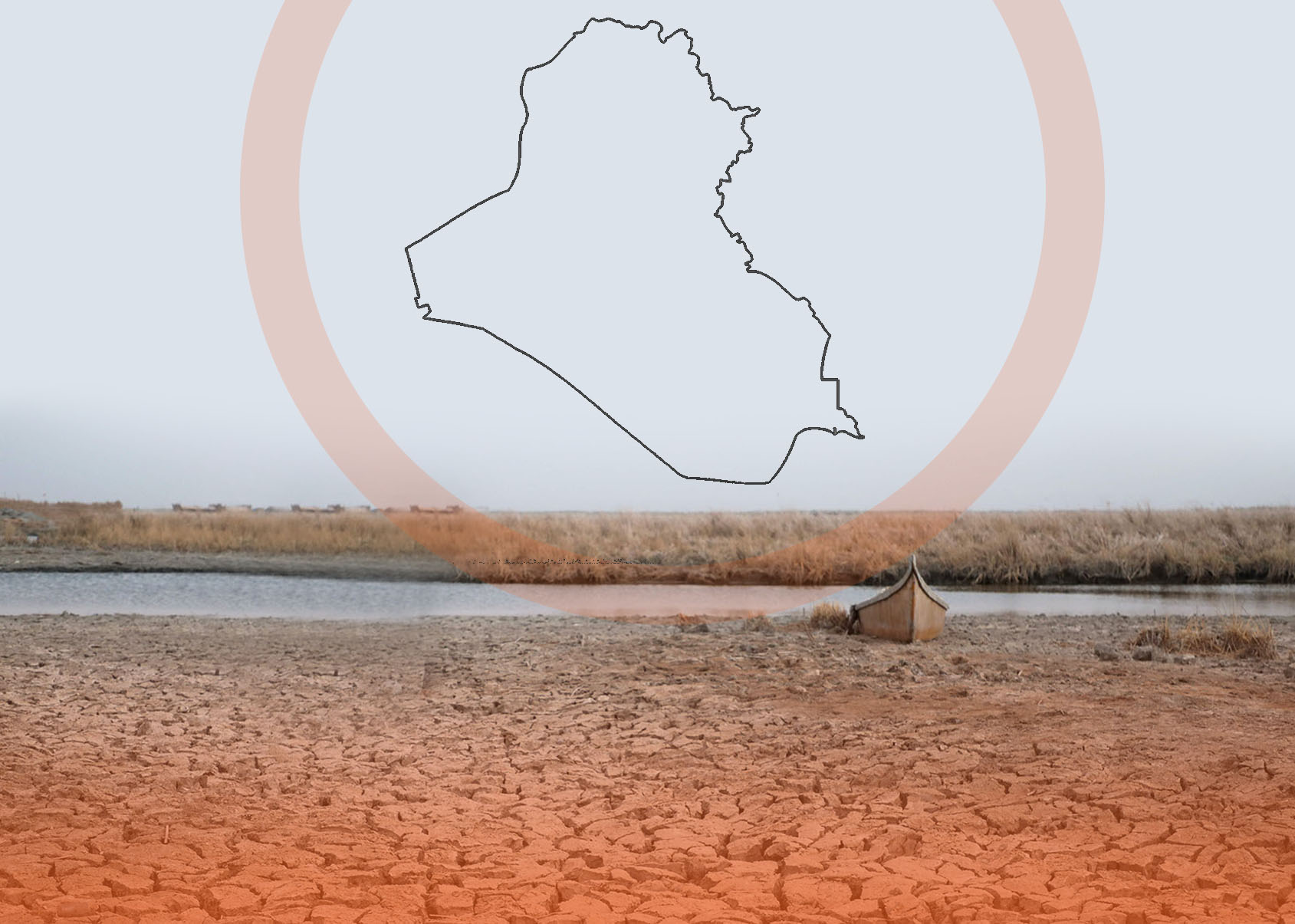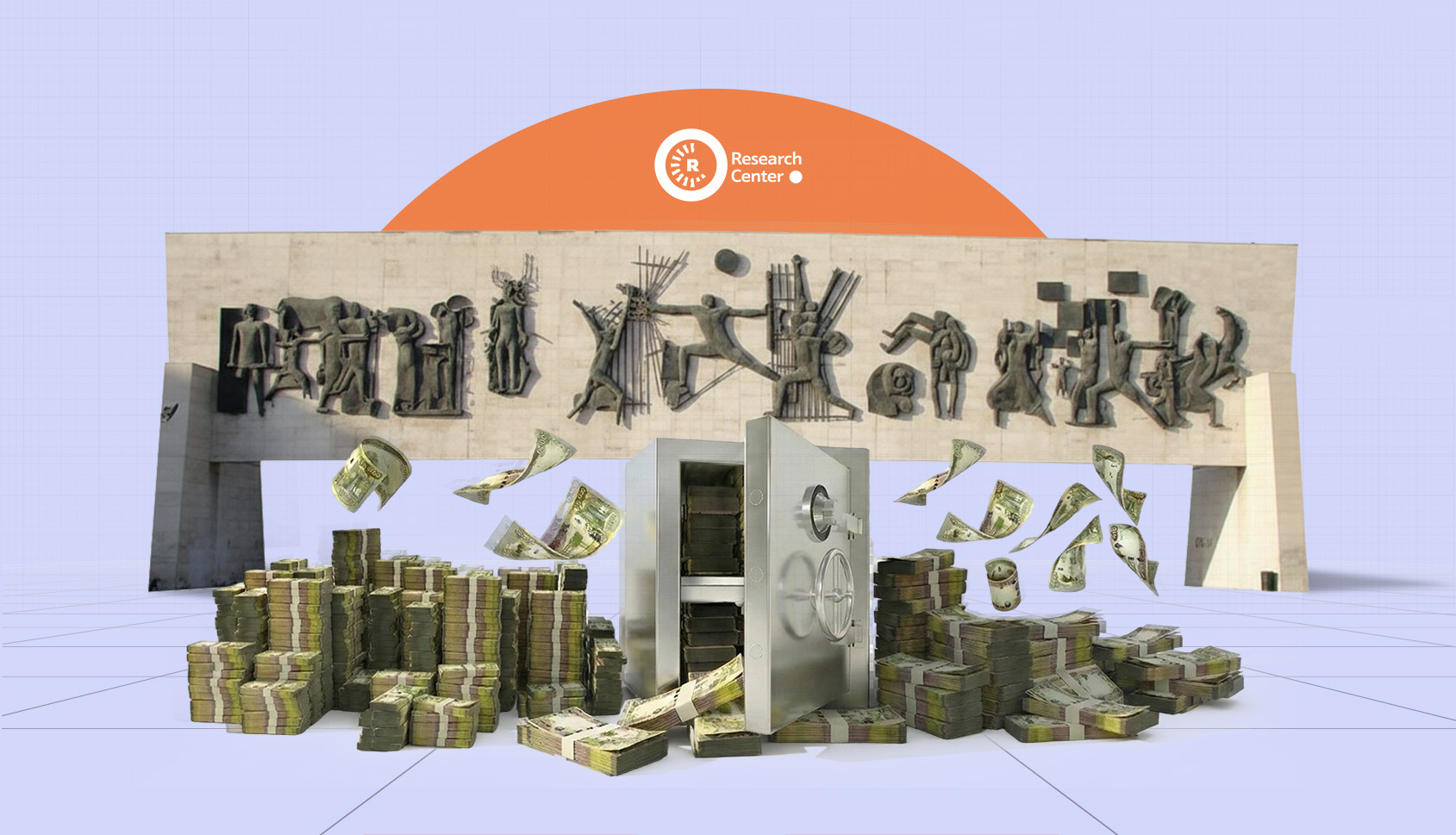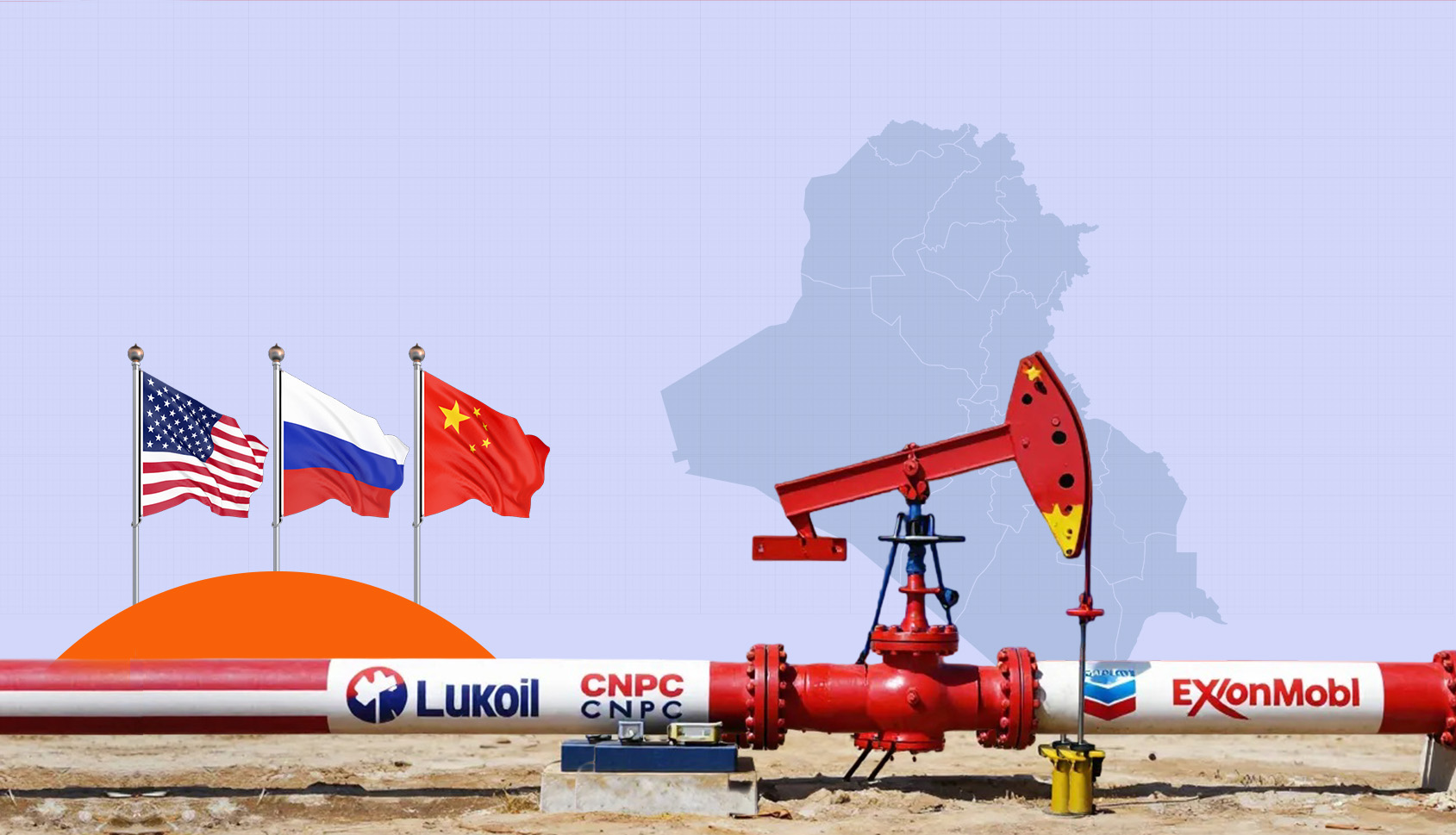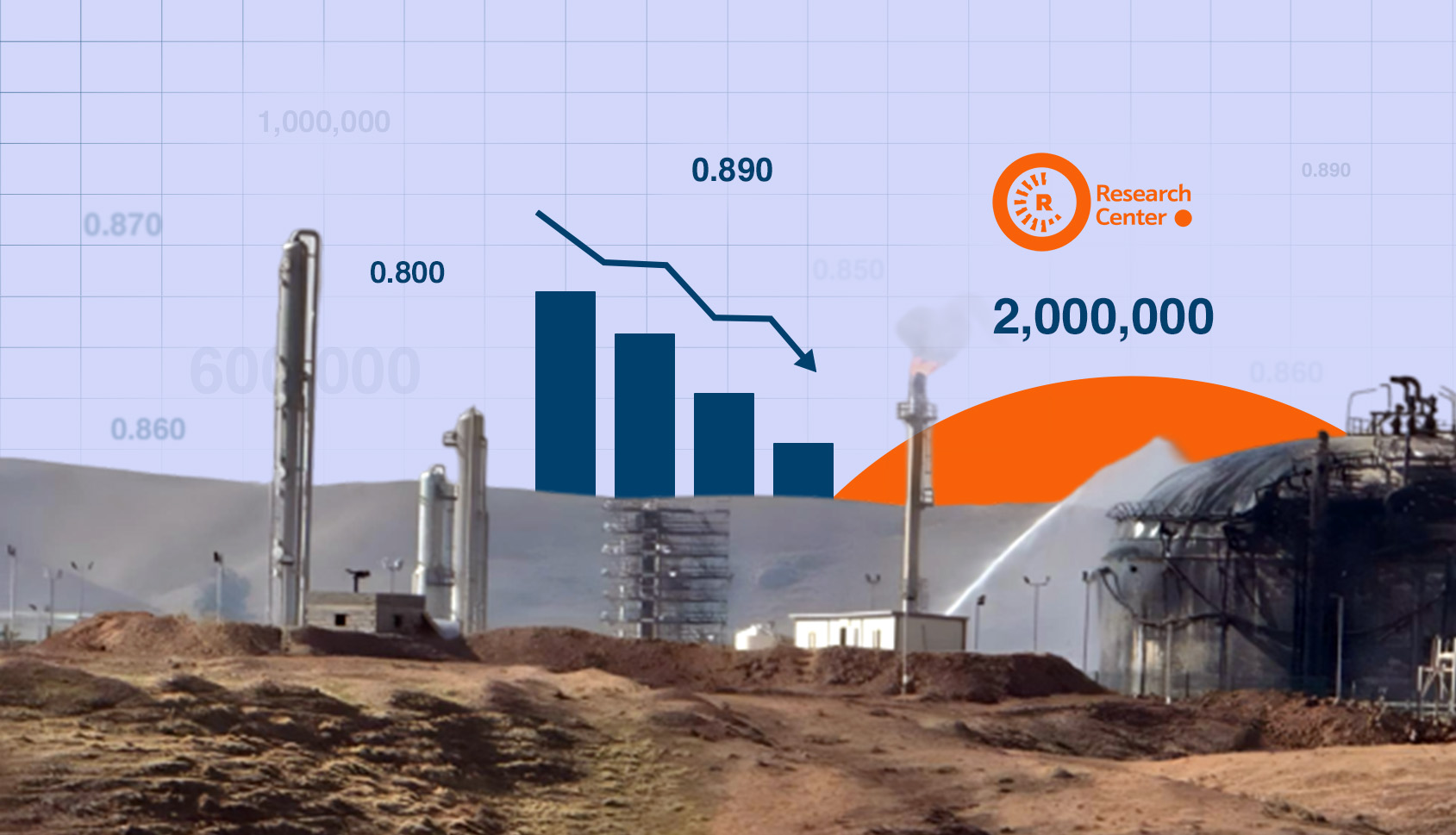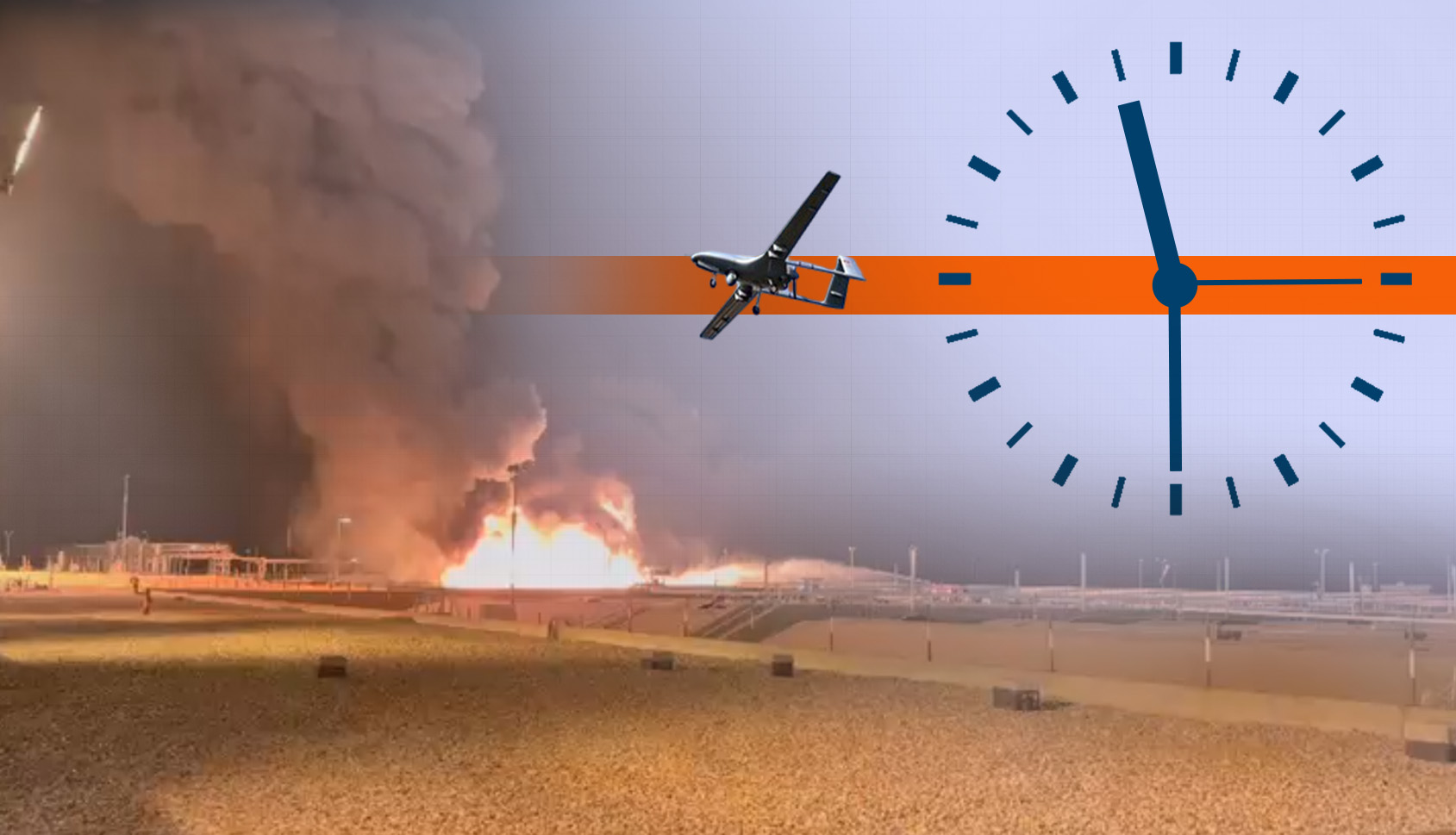Save for later
Introduction
In 2020, Iraq was designated by its former Minister of Environment, Jasim Abdulazeez Humadi, as the fifth most vulnerable country in the world to extreme temperatures, decreasing availability of food and water resources.1
These statements, based on the GEO-6 2 report of the UNDP published in 2019, refer to the increase in temperatures, the decrease and insufficiency of precipitation, the intensification of drought and water shortages, frequent sand and dust storms as well as flooding. 3
The results of this report, combined with soil salinization, its pollution and the health hazards that they cause represent climate change-related displacement factors. The multiplication of these factors in the course of the last decades has accelerated and could still accelerate the process of population displacement.4 In Iraq, natural disasters might have caused the forced displacement of at least 150 000 people between 2008 and 20215. Although the primary cause of displacement remains the conflicts, as shown by the 6 million internally displaced persons (IDP)6 during the occupation of the Islamic State Organization7, couldn’t the impacts of climate change, which are becoming increasingly observable, become the first cause of the humanitarian crises in Iraq? If so, are the response on the field adapted for tomorrow’s challenges?
1) Climate change, poverty and migration to urban centers
It is not easy to establish direct links between climate change, conflicts and political instability. However, it is possible to assert that political instability, once linked to other risks in a specific context, serves as a threat multiplier. This explains why fragile states, or states in conflictual situations, are particularly affected8,9,10,11. That is the case for Iraq.
Firstly, the agricultural sector is being shaken by climate change12, which, coupled with the absence of real national13 and transnational14 water managements, speeds up environmental degradation. Between 1970 and 2010, cultivated areas have gone from 12.2% to 8.3% of the country’s total area15. In 2016, it was mentioned in the GEO-6 report that Iraq was losing 250 km2 of cultivated soil each year because of desertification16,17. Following the same logic, 39 % of Iraqi agricultural producers declared having reduced their plantation area in 202218. Finally, in the same year, agricultural production and food production decreased by 16% and 6% respectively19.

Secondly, the depletion, or even the absence of yields is causing a decrease in the household incomes economically dependent on this activity. 20,21. In Iraq, the agricultural sector is providing 20% of job opportunities22. Between 2020 and 2021, the Norwegian Refugee Council has evaluated the impact of drought on agricultural production during the harvest season. According to its survey, the average monthly income in six of the seven surveyed governorates 23 had fallen below the 440,000 Iraqi dinars deemed necessary for the Minimum Expenditure Basket (MEB)24 due to poor crops, losses in livestock, and a lack of opportunities for daily wage workers.
In the second half of 2022, the World Bank predicted that if temperatures were to be maintained and water supplies were to decrease by 20%, a 15.8% decline in GDP in the agricultural sector could be recorded.25.
It should be noted that agriculture is the main source of income for women in rural areas. The latter, generally marginalized within Iraqi society, could have a greater chance of falling into precariousness. In 2021, women represented only 10.6% 26 of the 40% of the active population27. During the same year, they represented approximately 20% of the agricultural workforce28. This workforce is generally less skilled and particularly vulnerable to climate change. Finally, households living in rural areas, particularly women, are more dependent on crops which constitute their livelihood, especially in the absence of incomes.29,30,31,32.
As previously mentioned, climate change is leading to a decline in agricultural yields, resulting in reduced produce and income. Furthermore, the scarcity of food supplies is leading to the rise of food cost. The World Bank has estimated that an increased food cost of around 10 to 20% would in turn increase poverty by 1.6 to 4.4%33. In 2022, inflation averaged 5.2% over 9 months, mainly due to an increase in the public services and food costs34. In a turbulent geopolitical context marked by the war in Ukraine, global demand for wheat increased by 6% in 2022, causing a 6% increase in cereal prices in Iraq. Severe droughts and high-record temperatures have increased Iraq's dependence on agricultural imports35,36. Despite the challenges, the country's authorities have been unable to take public-interest decisions, such as passing the federal budget, due to their inability to form a government. In June 2022, an emergency law was passed to allocate public funds to food security and development, eight months after the elections of October 202137.
While the four cardinal points of Iraq are not homogeneously impacted by climate change, the depletion of resources could lead, in some places, to rivalry over these resources. In the south of Iraq, the most devastated area, it is not uncommon for tribal disputes to erupt over water sharing38.
In the absence of mediation and sharing solutions, these disputes sometimes turn into conflicts39. In recent years, protests and riots40 have become the main disputes related to climate risks41. In this context, tribal structures have gained influence by playing a mediator role with state institutions in water-related conflicts. However, their resurgence has worsened cross-border instability. 42In the event of a significant environmental degradation, a shift from water and/or food insecurity to social insecurity could reinforce these trends.43.
Given the previously mentioned scenarios, two possibilities prevail. Either individuals will turn to other economic activities, sometimes informal44, or they abandon rural life in favor of urban centers45. Before the end of the 1950s, Iraq was a so-called traditional society. The rural population represented 75% of the total population, compared to 25% in urban areas. Today, 70% of the population lives in urban areas, and 30.2% live in rural areas46. For example, the city of Fao, located on the Persian Gulf and on the banks of the Chatt-el-Arab, went from 400,000 to 50,000 inhabitants in four decades only47.
Nevertheless, this phenomenon of booming urbanization has not been accompanied by long-term urban planning policies48. Iraq faces a growing housing deficit, in part due to decades of sanctions and conflict. Political authorities did not sufficiently invest in this sector. During 2022, the housing shortage was estimated at 3.5 million49. In addition, the quality of built housing is decreasing and informal housing is increasing50,51, as shown by the illegal conversion of agricultural land into residential areas52.
At the same time, the basic services provided to residents, particularly water supply and access to electricity, are dwindling due to a lack of resources to improve infrastructure53. Under such conditions, newcomers have difficulties finding employment and most of them have no choice but to settle in the suburbs, or even in slums54. On the contrary, the wealthiest manage to expropriate agricultural land for housing and bribe local authorities to provide for their needs55. These dynamics are dividing citizens, and people from the rural areas are perceived as an economic threat and an additional burden for public services56. These arguments are echoed by local authorities that exacerbate tensions57. In response, the stigmatization and exclusion of the most vulnerable create fertile ground for recruitment into armed groups and encourage the development of criminal networks58.
With the growth of extreme climate events, these trends could be reinforced 599. In 2019, the IOM estimated that 21,314 people had migrated from rural to urban areas due to climate and/or lack of resources60. Water scarcity is one of the most important factors driving people to leave. By the end of 2021, IOM recorded approximately 20,000 people displaced by the scarcity61, high salinity and poor quality of the water62.
II) IDPs and NGOs
Rural-urban migration does not represent all migrations within a country. Iraq is witnessing a prolonged humanitarian crisis due to years of war, and the more recent conflicts against the Islamic State Organization. Five and a half years later, the impacts remain visible, particularly given the number of IDPs and individuals living in precarious conditions63.
In the beginning of 2022, 2.5 million people needed humanitarian aid. Approximately 1.2 million of them were IDPs. The most vulnerable live in conflict-prone areas of northern and central Iraq. Aside from the difficulties they face in the camps (insecurity, lack of education, health problems, robbed housing), climate change is impacting their living conditions, regardless of the cause of displacement, and reducing their chances of returning to their homes64. In addition, environmental degradation discourages them from returning to their region of origin. Moreover, when the latter are no longer considered displaced, they no longer benefit from the state support necessary for their reconstruction65.
In parallel, more than 500,000 repatriates are in urgent need of humanitarian aid66. How can this number be justified, when according to the 28th Principle of the Guiding Principles on Internal Displacement, the competent authorities have, in the first place, « the primary duty and responsibility to establish conditions, as well as provide the means, which allow internally displaced persons [...]" and to " endeavor to facilitate the reintegration of returned or resettled internally displaced persons. »67
In May 2018, former Prime Minister Haidar al-Abadi opposed this principle by urging IDPs to return to their home areas. More offensively, some IDP camps have been officially shut down, according to the government, in order to stabilize the IDP situation68,69. In 2019, the latter announced its intention to end all displacement by 2020. However, the COVID-19 pandemic interrupted this initiative70,71. Despite this slowdown, the authorities managed to close 11 camps and reclassify 4 as informal sites by the end of 202072,73. In this context, about 70 percent of displaced households returned to their areas of origin, changing from IDPs to repatriates74. Subsequently, International Non-Governmental Organizations (INGOs) reported that only 41% of IDPs had returned permanently to their place of residence 75.

In this regard, it is important to note that repatriates often face insecurity in the areas they return to, as well as the lack of basic infrastructure, of services and of economic opportunities.
Should they be unable to stay, they will be subject to a second or even a third displacement. In this context, their vulnerability and their needs are increased, particularly in the case of displacement linked first to conflict, and then to natural hazards76. In 2021, severe drought conditions led to the displacement of repatriated households in Nineveh Governorate77,78. With the increase in this type of crisis, humanitarian actors, particularly INGOs and NGOs, are facing more challenges for which they are not sufficiently prepared 79,80.
Prior to 2003, NGOs were practically absent from the Iraqi landscape, with the exception of those present in the autonomous Kurdish region since 1991. After the fall of Saddam Hussein's regime, a multitude of humanitarian organizations emerged. The emergence of international NGOs allowed a minority of local NGOs to develop through co-directed projects. However, due to the insecurity, their room for maneuver was quickly reduced. Many of them left Iraq in order to coordinate their aid operations from a distance, notably by funding local NGOs. This has allowed the latter to emerge and develop. In 2010, the NGO Coordination Committee in Iraq estimated that there were 70 INGOs and 10,000 to 12,000 NGOs throughout the country.
From 2003 to the present day, these NGOs have prioritized issues such as security, social justice, human rights, etc. This choice stems from the humanitarian urgency, initially caused by the war against the American invasion, and then by the fight against ISIS. The instability that prevailed from 2003 until 2017 hushed any global reflection on climate issues and challenges. This is why few NGOs have focused their work on these topics at the national and local level.81.
Especially since discussions related to climate are complex : NGOs wishing to invest more in these issues are sometimes met with a lack of qualified workers. Some skills, such as understanding scientific and technical topics, are not widespread. At the same time, the lack of past and present public awareness has represented and still represents a barrier to change, with too few political leaders making this field a priority.82.
This lack of interest at the highest level of the state hinders the access to scientific knowledge. For decades, data collection, analysis, and publishing in the climate field have been lacking. It is sometimes difficult to identify the historical climate-related trends, as well as the projections and assessment of climate vulnerability. To this day, the lack of studies related to climate vulnerability, especially at the local level, hinders the development of long-term adaptation strategies. This translates into the absence of coordinated sectoral policies, lack of funding, and a deficit in legal adaptation. 83,84.
This lack of synergy is hindering the action of NGOs, which are having more difficulties adapting, especially financially. Historically, the vast majority of these NGOs have only received funding linked to emergency and relief efforts. Furthermore, as interest in climate issues is relatively new in Iraq, funding projects linked to this topic are still not systematic. Between 2016 and 2018, and in 5 countries, 85, only 1.8% of funding requests projects humanitarian (so 99 out of 5,558), were related to climate change. These represented 3% of the proposed budget, meaning $658.3 million out of $22.3 billion. Among all the change-related programs, Iraq was the country that benefited the least of it86.
While Iraqis are gradually becoming aware of climate change mainly after experiencing its effects, many of them are not able to counter it due to a lack of means and resources. Without preparation or planning, more migrations are to be expected. These migrations will mainly be the result of political divisions which, to this day, are slowing down the implementation of sustainable solutions and are delaying the actions of humanitarian organizations87.

